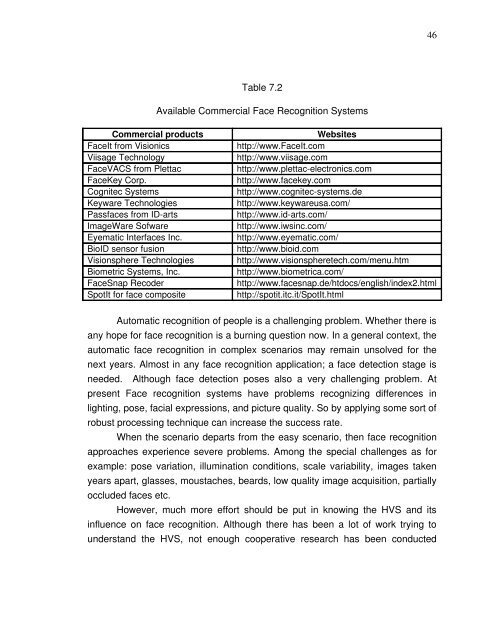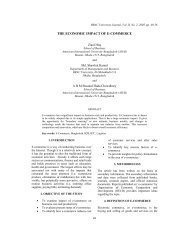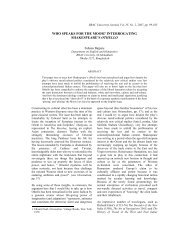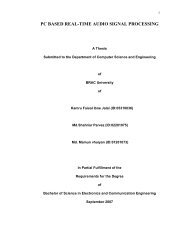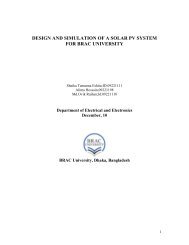LITERATURE SURVEY OF AUTOMATIC FACE RECOGNITION ...
LITERATURE SURVEY OF AUTOMATIC FACE RECOGNITION ...
LITERATURE SURVEY OF AUTOMATIC FACE RECOGNITION ...
You also want an ePaper? Increase the reach of your titles
YUMPU automatically turns print PDFs into web optimized ePapers that Google loves.
Table 7.2<br />
Available Commercial Face Recognition Systems<br />
Commercial products Websites<br />
FaceIt from Visionics http://www.FaceIt.com<br />
Viisage Technology http://www.viisage.com<br />
FaceVACS from Plettac http://www.plettacelectronics.com<br />
FaceKey Corp. http://www.facekey.com<br />
Cognitec Systems http://www.cognitecsystems.de<br />
Keyware Technologies http://www.keywareusa.com/<br />
Passfaces from IDarts http://www.idarts.com/<br />
ImageWare Sofware http://www.iwsinc.com/<br />
Eyematic Interfaces Inc. http://www.eyematic.com/<br />
BioID sensor fusion http://www.bioid.com<br />
Visionsphere Technologies http://www.visionspheretech.com/menu.htm<br />
Biometric Systems, Inc. http://www.biometrica.com/<br />
FaceSnap Recoder http://www.facesnap.de/htdocs/english/index2.html<br />
SpotIt for face composite http://spotit.itc.it/SpotIt.html<br />
Automatic recognition of people is a challenging problem. Whether there is<br />
any hope for face recognition is a burning question now. In a general context, the<br />
automatic face recognition in complex scenarios may remain unsolved for the<br />
next years. Almost in any face recognition application; a face detection stage is<br />
needed. Although face detection poses also a very challenging problem. At<br />
present Face recognition systems have problems recognizing differences in<br />
lighting, pose, facial expressions, and picture quality. So by applying some sort of<br />
robust processing technique can increase the success rate.<br />
When the scenario departs from the easy scenario, then face recognition<br />
approaches experience severe problems. Among the special challenges as for<br />
example: pose variation, illumination conditions, scale variability, images taken<br />
years apart, glasses, moustaches, beards, low quality image acquisition, partially<br />
occluded faces etc.<br />
However, much more effort should be put in knowing the HVS and its<br />
influence on face recognition. Although there has been a lot of work trying to<br />
understand the HVS, not enough cooperative research has been conducted<br />
46


